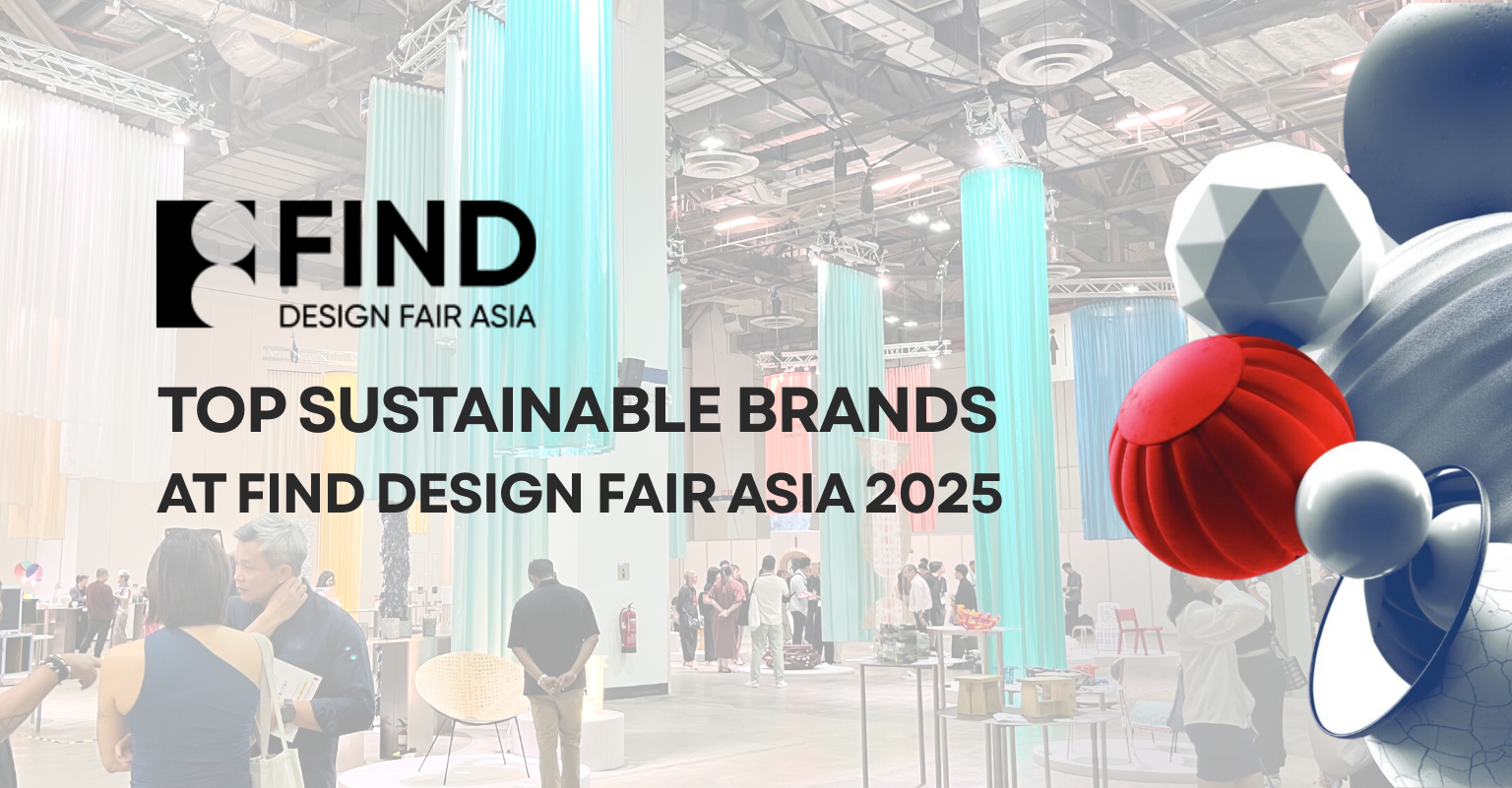Walking into FIND Design Fair Asia feels like stepping into the beating heart of design innovation. Hosted in Singapore, this annual gathering isn’t just another trade show, it’s where the world’s brightest architects, interior designers, product makers, and visionaries come together. It’s where conversations about the future of living spaces meet cutting-edge artistry, sustainability, and craftsmanship.
Beyond the buzz of exhibitions and the spark of collaborations, FIND is where new relationships are built, where trends are born, and where the promise of sustainable design takes center stage. This year, the event didn’t disappoint, delivering an inspiring lineup of brands redefining what’s possible when creativity meets responsibility.
Let’s walk through some of the standout discoveries that made this year’s carpet (quite literally) greener.
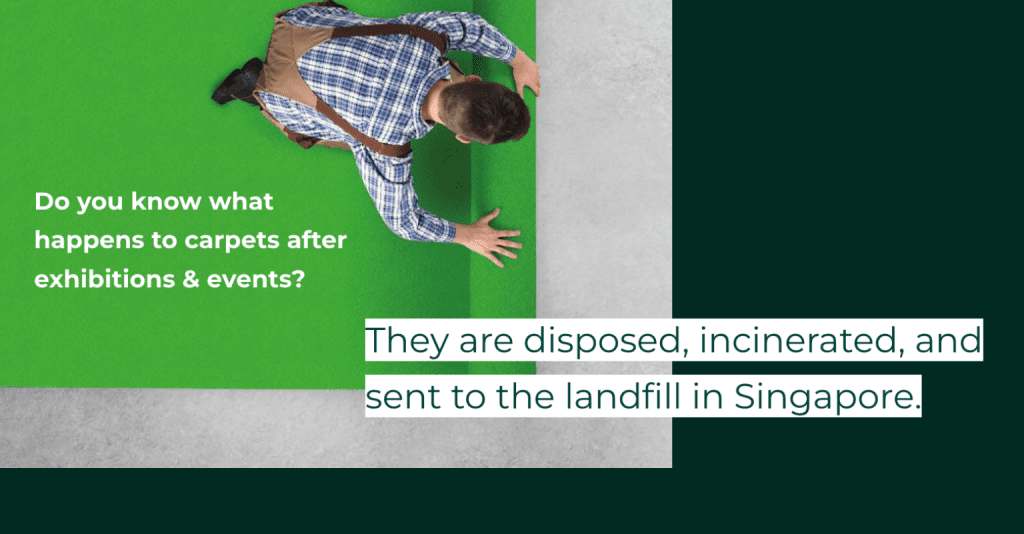
1. The Mill International: From Carpet to Chair
The journey began right at the very carpet beneath our feet. The Mill International, pioneers in flooring solutions, unveiled a remarkable circular approach: post-event carpets can be 100% upcycled into pellets used to create chairs. Each chair diverts 3kg of carpet waste from landfills, transforming temporary flooring into lasting design.
What’s more, The Mill became the first company (post-pilot) to achieve the Singapore MICE Sustainability Certification (MSC) through direct application—a milestone for the events industry. It’s proof that even the ground we walk on at exhibitions can be part of a bigger sustainability story.
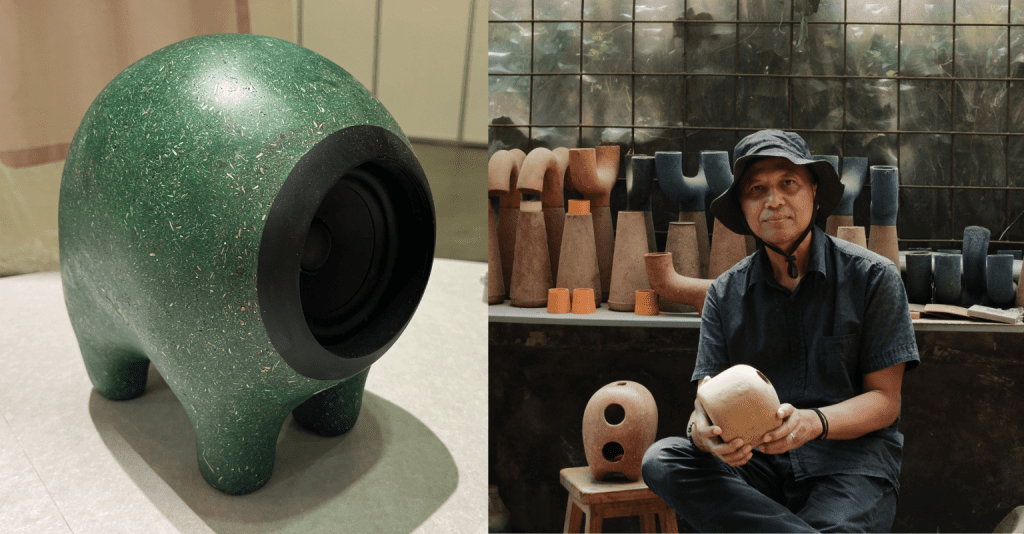
2. Cowka: Music from the Unexpected
Who knew that cow dung could sound so good? Cowka, a trailblazing design studio, turns an unlikely material into speaker systems that are both eco-friendly and stylish. By mixing cow dung with natural binders, they’ve created a product that isn’t just conversation-starting—it challenges the boundaries of waste material design. This bold experiment proves sustainability can be both functional and aesthetic, amplifying the harmony between nature and technology.
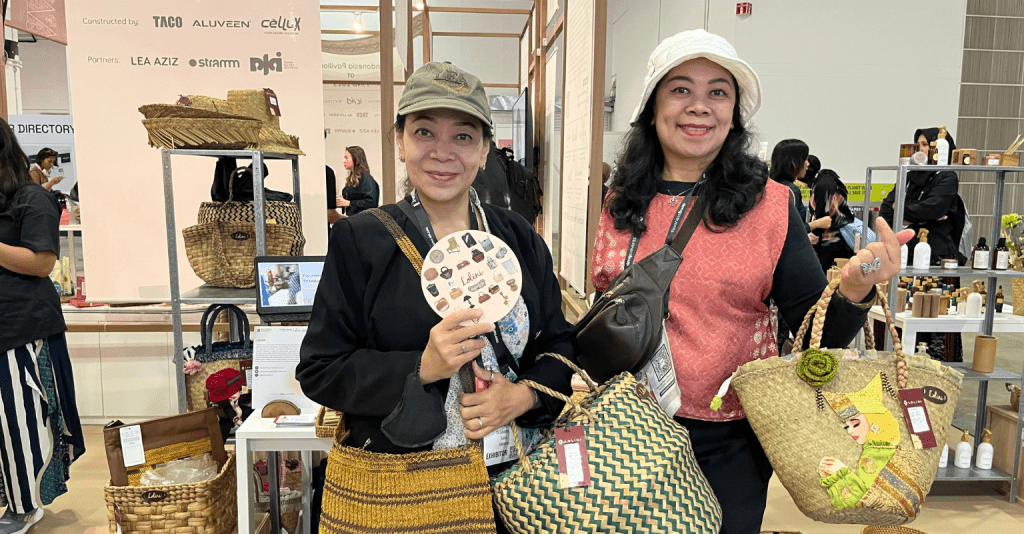
Widya & Veronika | Sisters and founders of Lolina Brand
3. Lolini: Orchid Roots and the Resilient Spirit of Youth
From Indonesia comes Lolini, a brand that beautifully bridges nature’s elegance with modern living. Their innovation stems from the orchid root, a material rich in symbolism and strength. But the heart of Lolini lies in its name and inspiration: the resilient spirit of the youth in Eastern Indonesia.
Just as orchid roots cling, grow, and thrive even in tough environments, Lolini’s products embody perseverance, creativity, and renewal. Every piece tells a story of transformation: how delicate natural forms and human determination can come together to inspire sustainable creations.
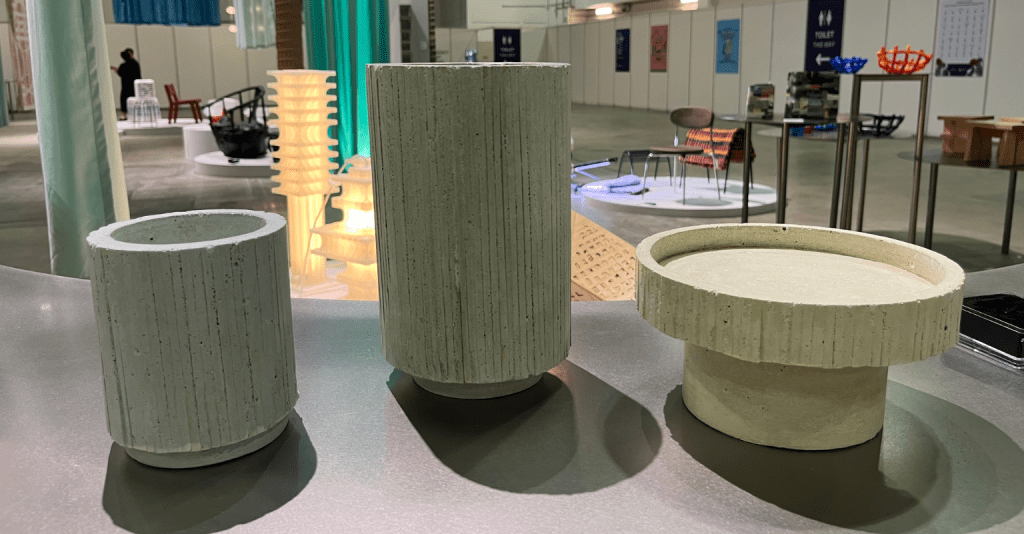
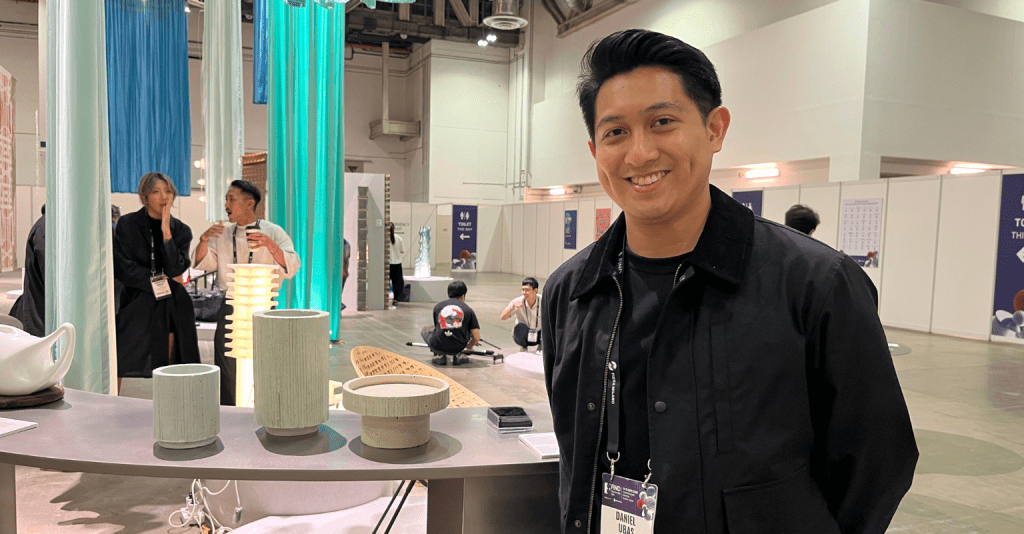
Daniel Ubas – Designer, Krete Manila
4. Krete Manila: From Ruins to Living Art
Concrete gets a poetic second life with Krete Manila, a Filipino studio redefining brutalist art. What once seemed like ruins now becomes bold sculptural pieces and home accents, tangible proof that discarded material can be reborn into striking design. Their work doesn’t just decorate; it narrates resilience, turning rubble into something that breathes new life into modern interiors.
Krete Manila presented the Mono Vessels in Concrete and Coffee Biochar. Inspired by brutalist architecture, these silhouettes are shaped by cast concrete and vertical formworks, strengthened with carbon-rich material from used coffee grounds. Beyond their raw beauty, the vessels embody a Filipino cultural gesture: the everyday act of sharing coffee along sidewalks and in homes. By reimagining waste coffee as part of their design, Krete Manila reduces emissions while turning an ordinary ritual into an extraordinary statement of sustainability and community.
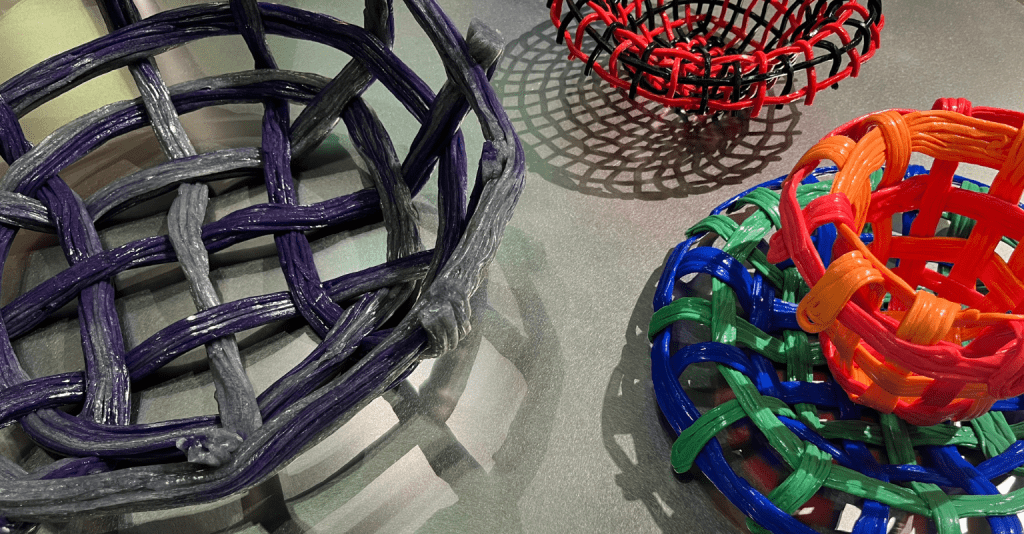
5. Yosuke Shimano: Designing with Balance
Japanese designer Yosuke Shimano approaches sustainability through the lens of subtle, refined minimalism. His pieces embody a philosophy of balance—between function and form, tradition and innovation. By rethinking how objects are made and experienced, Shimano proves that sustainable design doesn’t need to shout; it can whisper gracefully through timeless, understated creations.

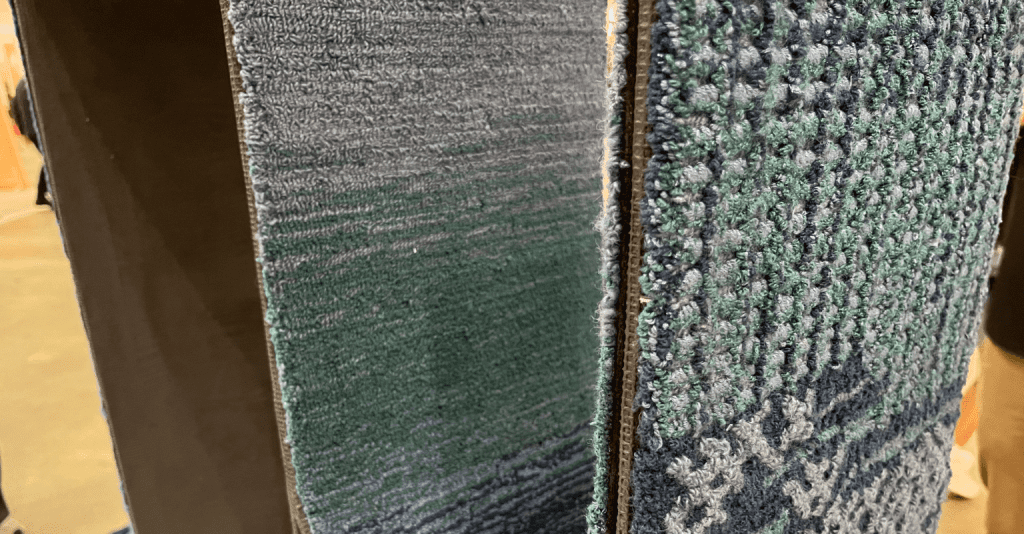
6. Eugenio Hendro & Studio Hendro Hadinata: Denim and Threads Reimagined
From Indonesia’s creative hubs came two powerful statements in sustainable design. Eugenio Hendro tackled waste from Bandung’s garment industry, transforming denim offcuts into sound-absorbing screens, giving discarded textiles an acoustic afterlife that merges utility with sustainability.
At the same fair, FLOORSTUDIO and Studio Hendro Hadinata (SHH) showcased JEJAK (Footprint). Crafted from leftover threads, JEJAK stretched the very idea of a carpet into art: its backing reimagined into a lace-like filigree, cascading gracefully from a sculpted iron console in shades of ocean blues inspired by coral reefs. Together, these works celebrated memory, material, and innovation—proof that textile waste can be elevated into design with both purpose and beauty.
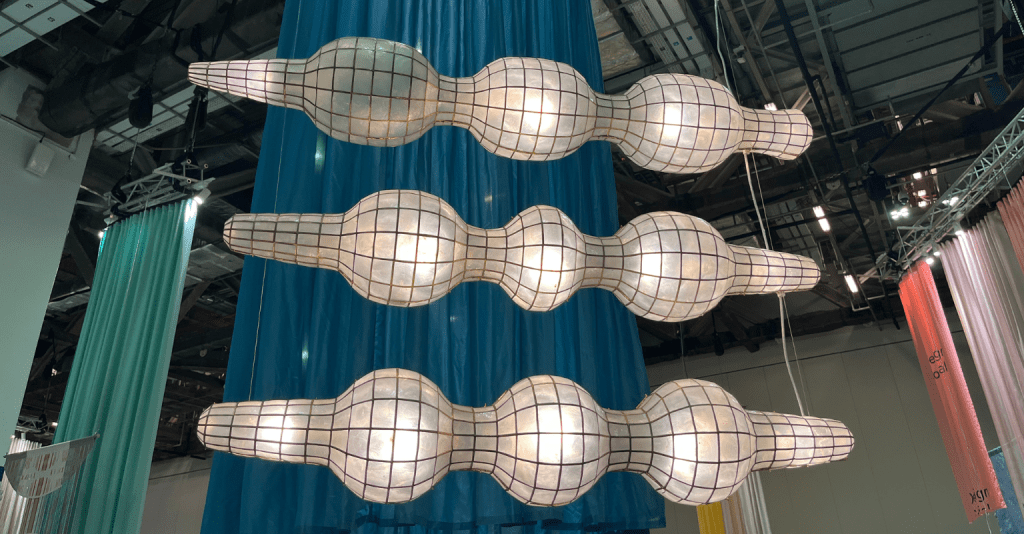
7. Senseware PH: Stories in Capiz
From the Philippines, Senseware PH transforms the fragile, luminous capiz shell into contemporary design pieces that honor both tradition and sustainability. Led by Filipino artisan Meyte Szita Chan, the brand crafts home accents and décor that carry layers of memory, materiality, and cultural reinvention.
To the eye, the collection evokes the Philippines often called the “Pearl of the Orient Seas” with its soft coastal glow, iridescent shells, and the vibrant natural textures of island life. Each piece celebrates Filipino craftsmanship while exploring how heritage can seamlessly evolve within modern design. In the hands of Senseware, capiz—delicate yet enduring—becomes more than just a material; it becomes a vessel of storytelling, bridging cultural pride with responsible, forward-looking design practices.
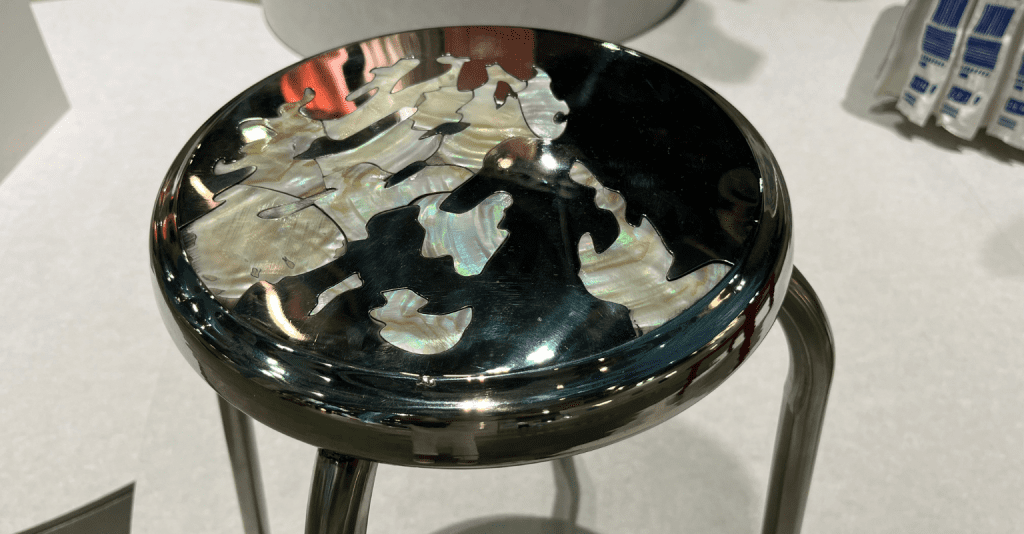
8. Amalgame Studio: Tradition in a New Light
Vietnam-based Amalgame Studio, founded by Emmie Massias and Marine Col, delves into the relationship between locality and material culture. True to its name, an amalgam being both a blend of elements and an alloy of mercury with another metal—the studio thrives on bringing contrasts together.
Their standout piece, the Khai Stool, reinterprets the humble metal stool found in countless Vietnamese homes and street stalls. By weaving in mother-of-pearl inlay, a disappearing craft, they breathe new relevance into tradition marrying old-world technique with everyday function. It’s a striking reminder that design can keep heritage alive in an age of mass production and uniformity.
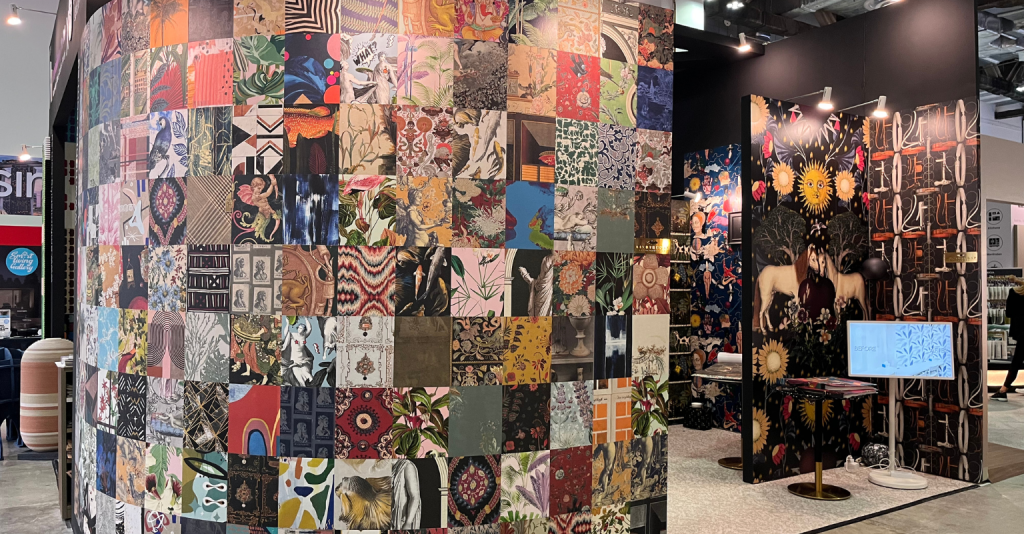
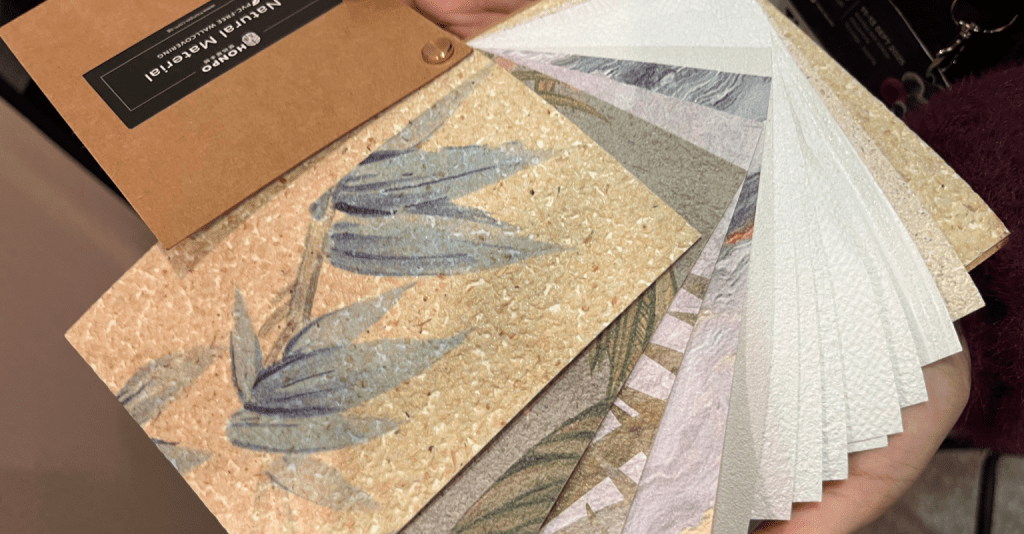
9. Honpo: Walls that Speak Sustainability
One of the most striking booths at the fair was by Honpo, which showcased two innovative wallcovering brands under its wing. From Korea, Namuh & Care presented PVC-free wall coverings—durable, sustainable, and stylish.
Alongside it, the German brand Marburg introduced Terra, the world’s first clay-based wallpaper, offering breathability, beauty, and resilience in one. Together, Honpo’s showcase proved that even walls can become canvases for sustainability and timeless design.
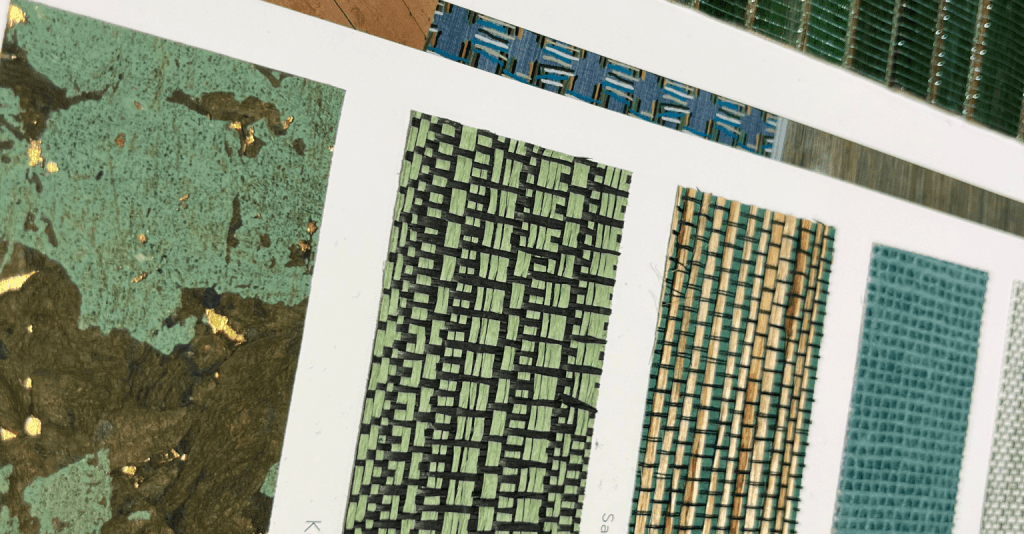
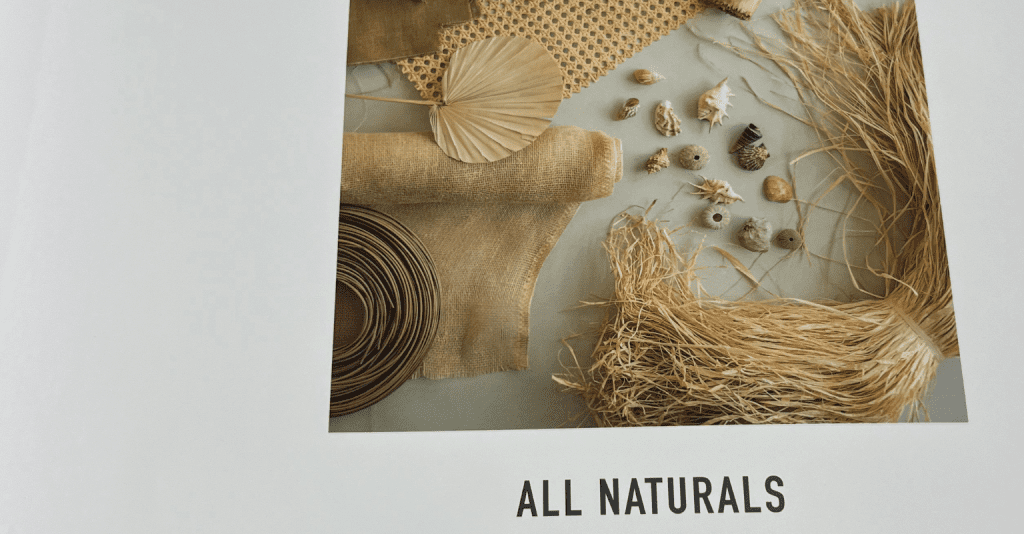
10. Arte: Natural Luxury in Walls
What started as their grandfather’s paint business in the agricultural landscapes of Haspengouw evolved into wallpaper and eventually into the design studio led today by brothers Philippe and Steven Desart. With each generation, Arte has embraced experimentation—pushing the boundaries of texture, colour, and material to redefine what wallcoverings can be.
Their All Naturals collection is a striking example. Using raffia, sisal, mica, and banana bark, Arte transforms walls into tactile experiences—rich in texture, depth, and storytelling. Each material evokes its natural origin, from the earthy warmth of raffia to the shimmering subtlety of mica, proving that interiors can stay connected to nature without sacrificing elegance.
Guided by Steven’s freethinking approach, Arte continues to explore how surfaces can inspire joy in both intimate homes and grand spaces. The All Naturals collection is a reminder that sustainability and sophistication can go hand in hand, honouring heritage while shaping the future of design.
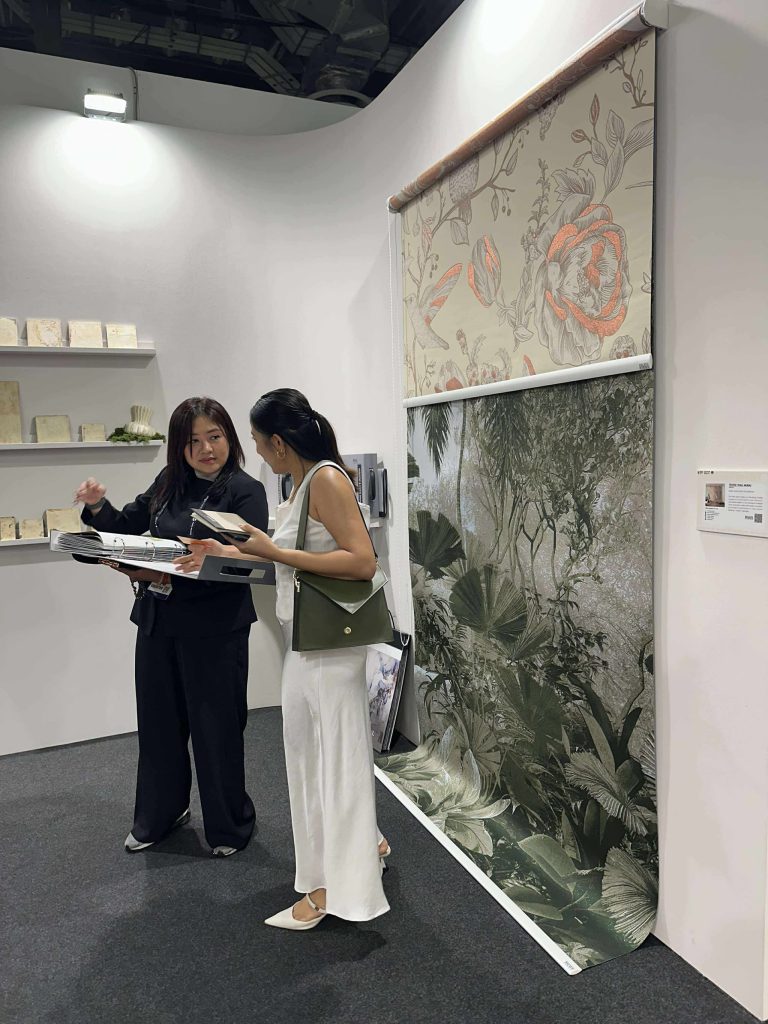
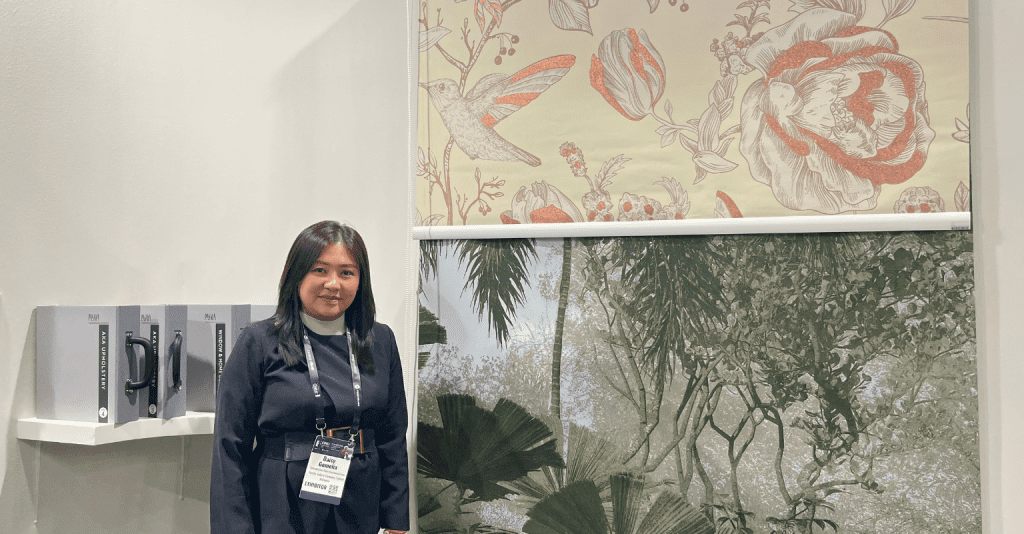
Daisy Gomelia – Business Development, Pasaya
11. Pasaya: Textiles from a Green Factory
Thailand’s Pasaya brought their signature elegance in textiles, but what truly impressed was how deep their sustainability runs. Their “Green Factory” is not just a label—it’s a way of operating. Built to promote both the physical and mental well‐being of employees, it avoids hazardous chemicals, treats all wastewater onsite, and has been certified with Green Industry and Thailand Trust Mark labels.
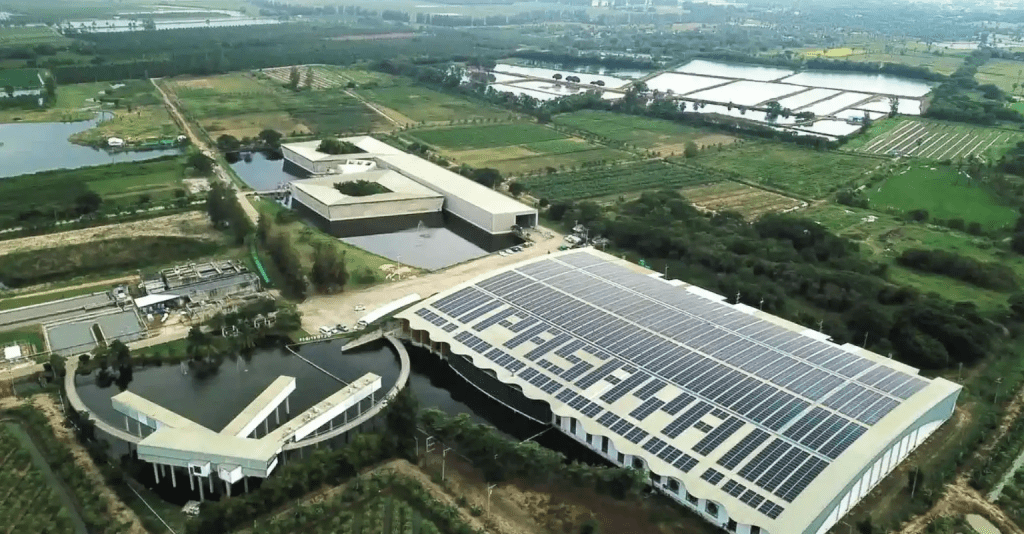
Pasaya has also begun upcycling materials into their home décor lines, launched solar energy installation phases that have reduced CO₂ emissions by over 40%, and planted thousands of trees under their “Factory in the Forest” initiative.
What this means in product form is textiles you can feel proud to wrap your home in—curtains, upholstery, bedding—made with beauty and accountability.
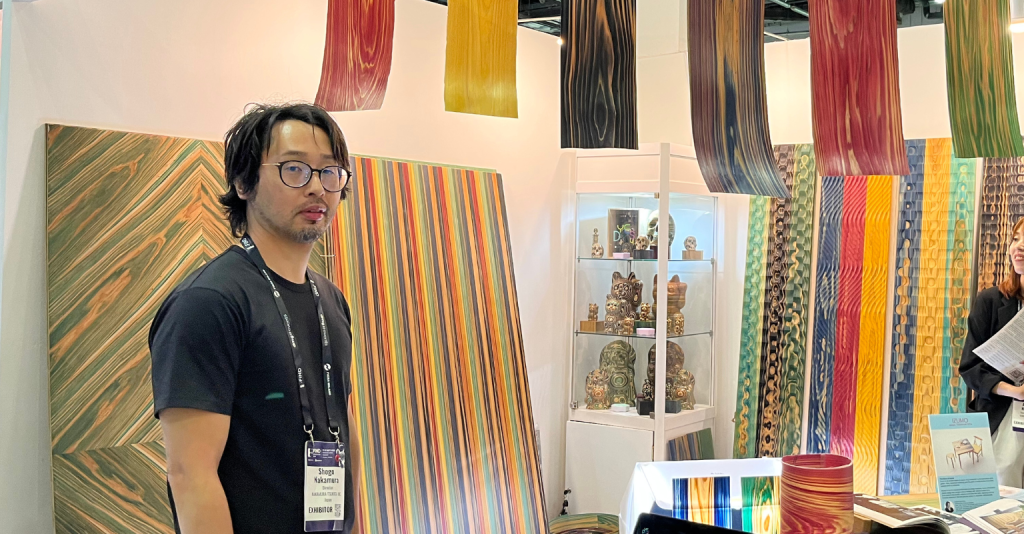
Shogo Nakamura – Director, Iridorita nakamura Tsukiita Inc
12. Irodorita Nakamura Tsukiita Inc: Color & Wood in Harmony
From Japan, Irodorita by Nakamura Tsukiita Inc stood out with its dyed wood and veneer work—particularly hinoki (Japanese cypress) and cedar—crafted with both design flair and environmental care. Their IRODORITAI line offers vibrant colored furniture tops (red, blue, yellow, green, black, etc.) using dyed veneer laminates, turning classic wood materials into statement pieces.
Beyond aesthetics, their sustainability credentials are solid. They’re SGEC certified (Chain of Custody certification) which ensures the wood used comes from responsibly managed sources.
Final Thoughts
At its core, FIND Design Fair Asia is more than a showcase—it’s a conversation about the future of design. Every booth, product, and installation served as a reminder that innovation thrives when we challenge conventions, respect traditions, and push sustainability to the forefront.
From carpets turned into chairs to dung turned into speakers, from denim soundproofing to capiz storytelling, this year’s highlights proved that waste can indeed become wonder. And in that transformation, we find not just new products—but new possibilities.
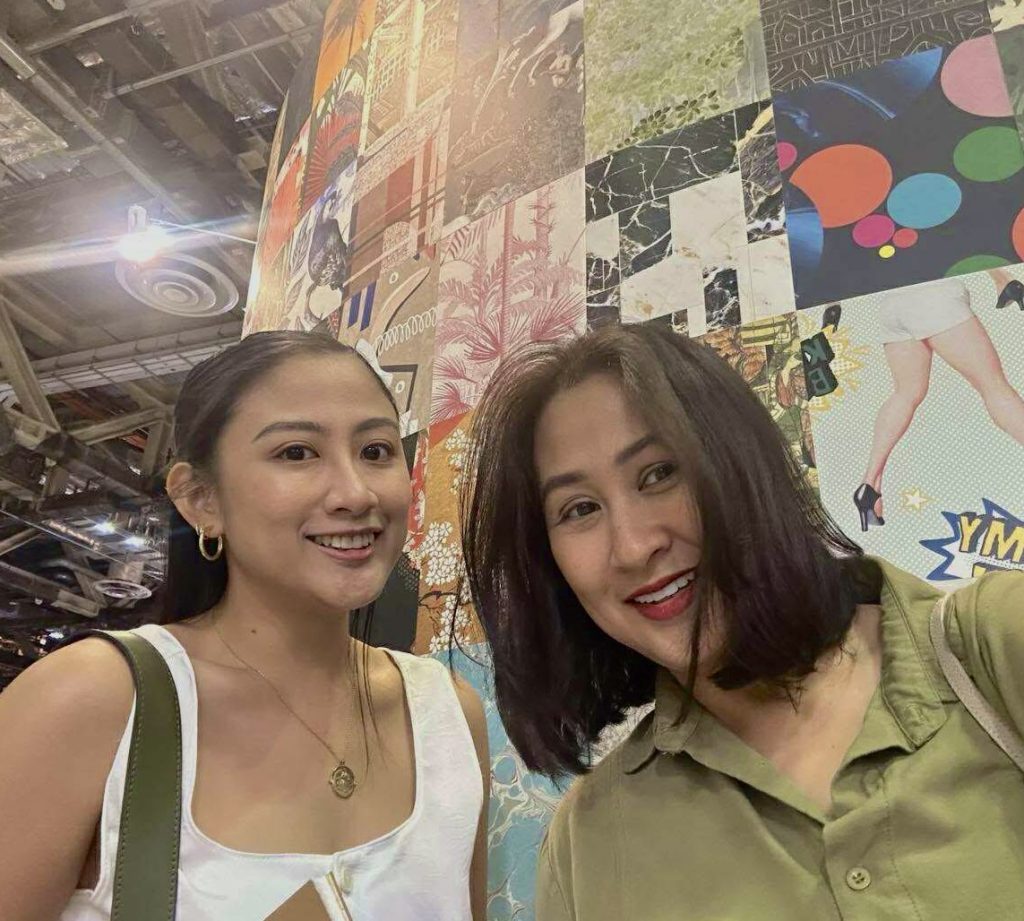
Paula Andrade, El Brand | Catherine Andrade, Business Development Manager of The Work Boulevard
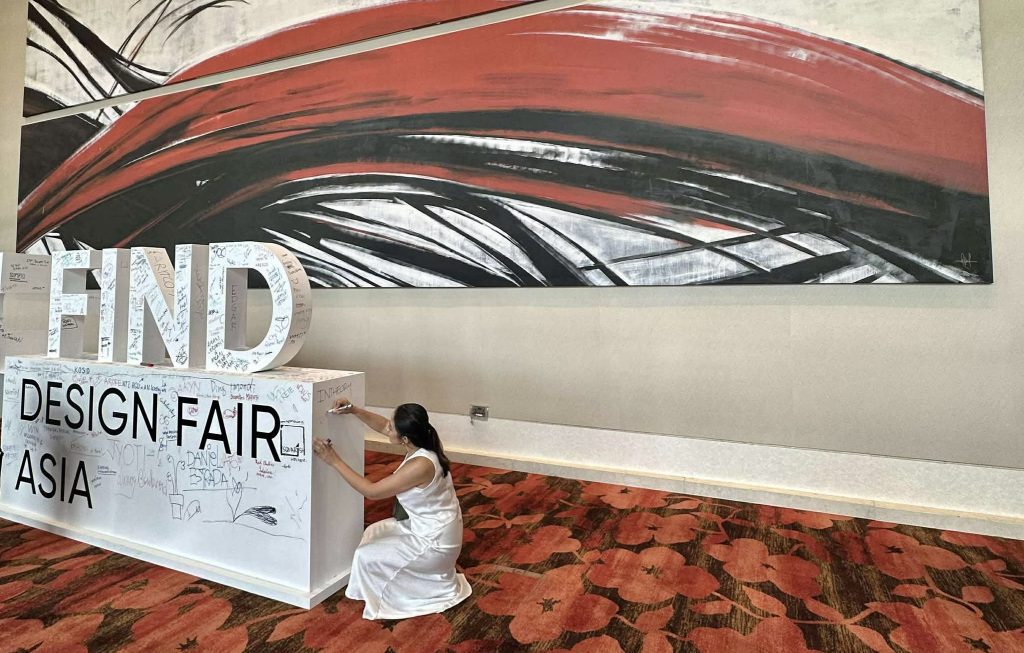
At El Brand Pte Ltd, we are passionate about connecting businesses, designers, and innovators with audiences who value creativity and sustainability. From discovering emerging brands to sharing insights on trends, our mission is to amplify stories that matter.
Curious to explore more inspiring brands, design, and sustainable innovation? Check out our other blogs for the latest trends, creative showcases, and stories from across the design, tech, marketing and lifestyle world.
